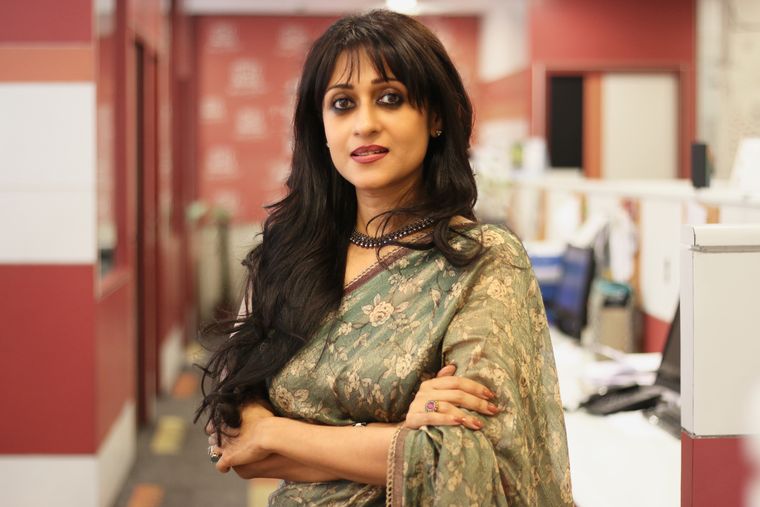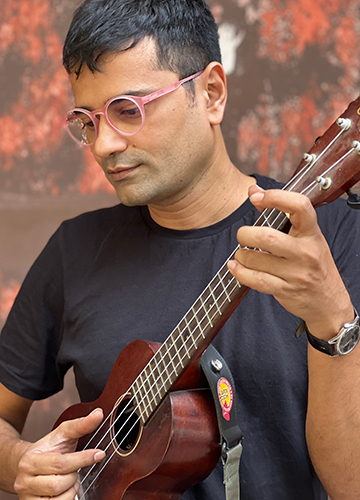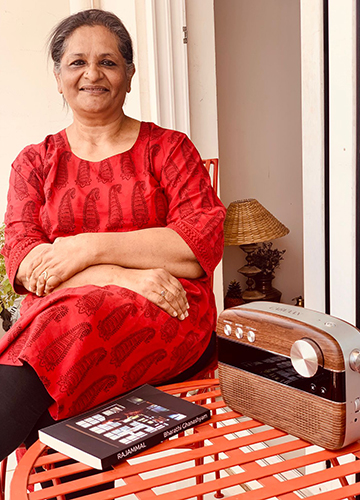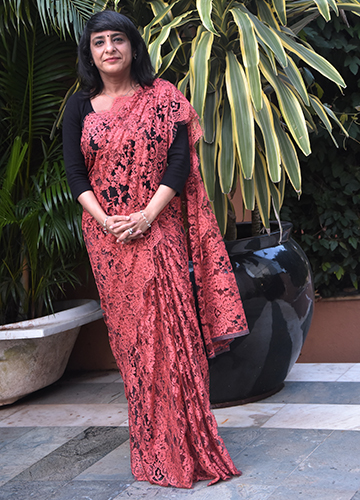When she was little, Bharathi Ghanashyam thought that if a radio set were opened, she would find people inside.
“Such was the power of the medium,’’ says Ghanashyam, 66, from Mysuru. She remembers waking up to the iconic tune of Akashvani every morning, as her father got ready for work. “Even as the announcer said, ‘Yeh Akashvani hai,’ I would groan, knowing it was time to get out of my warm quilt,” she recalls. “As I entered my teens, I became hooked to a film songs programme dedicated to soldiers. The afternoon [film song] request programme and the late night programmes gave my mother sleepless nights as she thought my brothers and I spent more time listening to the radio than studying.” She was a regular listener of Radio Ceylon’s hugely popular Binaca Geetmala, too, and would often wonder how one could listen to broadcasts from another country.
But it seems the love for radio was in her genes. “My grandmother often told me that my grandfather ran a radio station with little other than passion,” says Ghanashyam, an independent health journalist and an associate at Embode, a Bangkok-based human rights consultancy. “Her favourite story was that of my father, as a child, singing Baa Baa Black Sheep on air, forgetting his lines and breaking into tears.”
Ghanashyam’s grandfather Dr M.V. Gopalaswamy, a professor of psychology, set up India’s first private radio station in 1935. He had no grant or assistance, and would compensate artistes who came to perform with homemade upma and coffee. “Women artistes were given thamboolam (offering of betel leaves and betel nut),” says Ghanashyam. “Travel allowance was in the form of a tonga ride to and from home! It is to the credit of artistes of those days that they, too, responded with the same passion and were eager to come and perform with no monetary remuneration.”
Ghanashyam’s recount of her grandparents’ stories reminded me of my paternal grandmother, who had won a gold medal for topping class seven in the former princely state of Travancore in 1933. Back then, passing class seven was as good as clearing class 12. In her twilight years, her world revolved around the radio. As her hearing grew weaker, the songs got louder, much to our annoyance.
Radio, in its early days, was more than a source of entertainment; it fired the imagination for some like Saideep Bharadwaj’s uncle. His uncle would listen to cricket commentary on radio. “Whenever the commentator said the ball went for a six, he would imagine the batsmen to be giants,” says Bharadwaj from Bengaluru. “You need to be hefty to hit a six. The Indian players at that time were not that well built, unlike their West Indies counterparts.” Bharadwaj, too, grew up listening to cricket commentary on the radio. “That’s something I would compare with reading a book. When you read a book, you’ve to fill in things using your imagination, which is something very similar to listening to commentary and trying to visualise what might be happening,’’ he says, smiling. “Now when I watch the game on TV, [it] doesn’t leave much to the imagination.”
While TV and now internet are providing more services than the humble radio, some like Dr Yash Gulati prefer its no clutter-and-chatter workings. All India Radio is his go-to medium for news. “I find that on TV [news channels] there is so much of exaggeration and shouting,” says the senior joint replacement and spine surgeon at Indraprastha Apollo Hospitals, Delhi. “Also, I listen to radio for music, especially while travelling.”
Making waves
India’s incredible journey in sound waves started in June 1923 with a broadcast by The Radio Club of Bombay. Other radio clubs like the Calcutta Radio Club soon followed. The Indian Broadcasting Company was set up in July 1927, only to be liquidated three years later. Then came the Indian Broadcasting Service in April 1930. The IBS became the All India Radio in 1936.
“Back in the 1920s, when radio broadcasting began in India, it was primarily a hobbyist’s affair, with interested amateurs running local stations”, says N. Ramakrishnan, a radio entrepreneur and teacher at Jindal School of Journalism and Communication at O.P. Jindal Global University, Haryana. The government and commercial broadcasters did not really have a role to play till much later in Indian radio broadcasting, he adds. “Today’s internet radio and podcasting era is a kind of a return to radio’s roots, with amateurs and individuals once more having the power to produce and distribute content without the mediation of other entities,” observes Ramakrishnan.
Radio has come a long way in 100 years. It has become faster, quirkier and amazingly unconventional. While many obits have been written over the decades, radio has always bounced back. In an age that demands undivided, in-your-face attention, the radio is happy to play in the background and yet stay relevant. It is perfect company, be it on long commutes or while doing daily chores. “If you go to any place in the world and you hear their local radio, it will tell you a thing or two about its people. Radio is a human barometer of a city,’’ says Neel Adhikari, a music composer for radio, film and web shows.
Local, social
That overarching power of the radio is what Mumbai-based radio jockey Malishka Mendonsa knows and believes in. And as host of ‘Morning No 1’, Red FM’s award-winning breakfast show, she has used it to bring about real change. “Some of the greatest things in our city have happened because of radio,” she says. “It works in many ways—sometimes quietly or sometimes very insidiously or loudly.” During the pandemic, Malishka went beyond just letting people know where to get vaccines or oxygen cylinders and helped them connect with doctors.
The key to social transformation, says Ramakrishnan, is dialogue. “And the fact that radio is local, bypasses literacy barriers, and is relatively cheap to establish and operate makes it an ideal platform for the kind of social dialogue and debate that leads to social change,” he says. “Community radio, in particular, by being hyperlocal and dialect-based, is especially suited for this purpose, and should be central to grassroots democracy, and to establishing communication as a right for every citizen.” Ramakrishnan’s Ideosync Media Combine has been working on community radio for nearly two decades.
Community radios are a lifeline of sorts in rural areas. Take, for instance, Mandakini ki Awaaz, a community radio station in Uttarakhand’s Rudraprayag district. Owned and managed by a Garhwali community group called Mandakini ki Awaaz Kalyan Seva Samiti, the radio helped save lives during earthquakes and landslides. And when it is not on lifesaving duty, it offers a variety of content, from folk music to stories and interviews. Around 25,000 people have taken part in these programmes. One among them was Madhuri, a young girl from Pinglapani, a remote village. She became famous in her village after a Garhwali song she had sung was broadcast on the community radio. Mandakini radiowallahs often visit the villages in search of content. Villagers can also share their content with the station through WhatsApp.
“Women in the community call it meri (my) or hamari (our) radio station,” says Saritha Thomas, founder and managing trustee, People’s Power Collective, the capacity-building and training partner of Mandakini ki Aawaz. “It truly has the potential to be their safe, secure and happy place, where they, too, have an identity and where they can find solutions by being part of it themselves.’’
Likewise, people are at the heart of Mangaluru’s Radio Sarang 107.8 FM. “Among our producers, there are fisherfolk, people who roll beedis, daily wage earners and auto drivers,” says Dr Richard Rego, one of the forerunners of the community radio movement in India.
Pavitra Ghanshyam from Mysuru had a stint with Radio Active, a community radio run by Jain College, Bengaluru, that offers a platform for marginalised communities. “Community radio has the potential to create niche spaces for issues that don’t get reported by mainstream media,” she says. “However, despite government encouragement, its potential has not been fully exploited in India. It is important to explore why and fill these gaps.’’
Community radios also help preserve heritage and culture. “We used to broadcast folk songs like Yakshagana in vernacular languages, including Tulu and Konkani. Now commercial radio follows our footsteps,” says Rego, director of Institute of Communication and Media Studies, St Jospeh’s College, Bengaluru.
FM boom
But there is no denying that radio owes its revival in India to the entry of private players in 2001. It is estimated that FM radio channels are likely to grow at 6 to 8 per cent every year.
“FM is what started my journey,” says Adhikari, who is best known for the music of Netflix series Little Things. He says he can never resist the charms of radio and absolutely loves making radio jingles. “The length of radio jingles or spots is usually under a minute or so,” he says. “I really enjoy the challenge of creating something meaningful in such a short duration and conversely I also enjoy the fact that it’s momentary and out of our system in a week at the most.”
There is never a dearth of talent on radio, says Nisha Narayanan, director and COO, Red FM and Magic FM. “It is just that the talent is pouring in the wrong vessel,” she says. “We simply have to figure out ways to align these talented individuals to their heart’s calling so their skills could be better utilised.”
FM channels in India are on an experimenting spree. Even Malayalam, a language that does not lend itself to innovations easily, has seen some very ingenious and daring experiments. “Till private FM radio came along, presenters on government-run radio spoke formally in chaste Malayalam,” says Ravi Nair, director, programmes, Radio Mango, Kerala’s first Malayalam private FM station. “FM radios brought a more casual, laidback style, where English words peppered the delivery.’’
‘Tell Your Secrets Secretly’, a campaign launched by Radio Mango, encouraged listeners to reveal their best-kept secrets. “It received an overwhelming response,’’ says Lishna N.C. aka RJ Lishna, the first private FM RJ of Kerala. “One of our listeners confessed that he had spread Vicks on bread instead of jam.”
Content is king when it comes to radio. And, it has to be relevant, especially for today’s generation. That is perhaps why What Women Want, a FM radio show hosted by actor Kareena Kapoor Khan became popular. “It dealt with themes like patriarchy and modern-day relationships,” says Mala Jadwani, a postgraduate in international journalism from London Metropolitan University. “Kareena was appreciated for her solid content, and not for glamour. What is challenging about radio is having no visual and yet making sure your listeners are visualising what you are saying. That requires some sort of talent.”
Content rich in local flavour is also a big pull. “Our popular programmes like ‘Choklate Baya’ and ‘Detective Choklate’ are rich in Odia flavour. ‘Choklate Baya’ that aims at creating awareness on social issues is broadcast in an Odia dialect of yesteryears,’’ says Monica Nayyar Patnaik, founder of Radio Choklate 104 FM, an initiative of Sambad, the largest circulated daily in Odia.
And, radio channels are adapting themselves to the changing consumer needs. “Our audiences are changing—from primarily housewives to a mix of housewives and youth—and we tailor our programmes to cater to their specific needs and interests. We have changed our programming pattern eight times over the last 16 years,’’ says Patnaik.
Digital support
Robin Lai, consultant, programming for Radio Mirchi, Kolkata, has worked in radio for almost 28 years, and has been told that radio is dying every now and then. But that is definitely not the case, he says. There are shows that have brought back storytelling to radio, and in turn brought in listeners who tune in with family. “What is new these days is that we connect not only through radio, but also on social media like Facebook, Instagram and YouTube to reach out to a larger audience and provide them with additional content to consume,’’ says Lai.
All India Radio has been one of the earliest to adopt emerging media, be it web or social media platforms. Today, AIR has millions of followers and likes on various social media platforms, says N. Venudhar Reddy, director general, AIR.
Reddy admits that the biggest challenge before AIR is to make itself relevant to younger people while not jettisoning its traditional values. “AIR recently launched dedicated programming for young people called #AIRNxt in all languages and dialects, wherein younger people are invited to AIR studios to anchor programmes,” he says. “More than 20,000 boys and girls are expected to participate in this programme in 52 weeks.”
How does AIR respond to competition? “FM has brought in a fresh breeze into radio universe,” says Reddy. “Its quality of sound and accessibility on mobile handsets and cars took it closer to listeners. AIR is also investing heavily on FM and is hopeful that it would take AIR closer to people.” Dealing with competition involves being aware of your strengths and using them effectively. “AIR’s strength is its ability to work with micro local audiences in their own language or dialect. No other medium reaches people in about 200 languages/dialects. It also gives a unique advantage to advertisers to micro-target their intended consumers,’’ says Reddy, adding that AIR needs to again become an intrinsic part of society as it used to be in bygone generations.
Sudha Thampy, 82, from Thiruvananthapuram would agree. As a child, she used to take part in radio drama. Her father could not go a day without listening to AIR news. “Though he studied in Oxford, he preferred AIR to BBC Radio,’’ she says. Radio continued to be an integral part in Thampy’s life, too. She started lending her voice to Mahilalayam, a women’s programme.
But not everyone is happy with the way radio has grown. Content has given way to commercials and the ratio of the former to the latter is so skewed that it is no longer enjoyable to listen to radio, laments Ghanashyam. “While bottomlines are important, it is content that makes any media relevant and I often wonder how that priority can be brought back to centre,” she says. “However, I must add that AIR still continues to give prominence to content and as a radio lover I hope that doesn’t change.’’ Ghanashyam suggests private FM stations look for alternatives to advertising. “If OTTs can do it through subscriptions, why can’t radio,’’ she asks.
Many feel that it is high time private radio channels are allowed to broadcast news. “AIR news reminds you of [government] press releases. It is not real journalism,” says Meera K., cofounder of Citizen Matters, a civic media platform. “During the pandemic, they had news bulletins every two minutes on Vividh Bharati. Initially it was nice. But over the last two years, it has become the government’s voice. Riots and protests, people questioning vaccines, are all conveniently omitted by AIR. It does not deserve to be called news.” Both community radio and commercial radio have their own revenue limitations. The public broadcaster has kind of completely given up. “Who serves the community then?” she asks.






